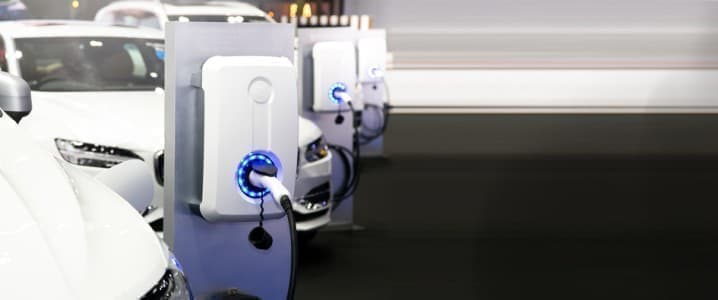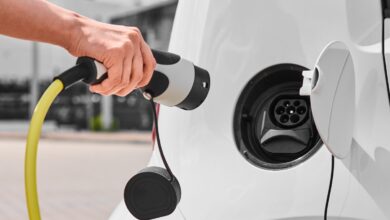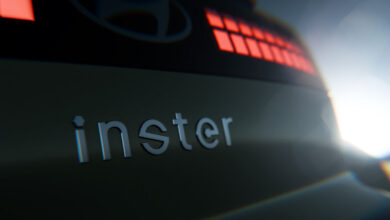How EVs Could Provide Renewable Energy Storage To Support the Grid

Optimism around the growth of the electric vehicle (EV) market has faltered in recent months as consumer uptake has grown at a slower pace than previously anticipated. This has led several automakers to reduce their EV investments in the mid-term until the market becomes more stable. Further, Tesla’s recent decision to cancel the rollout of a large-scale EV charging network in the U.S. has led to greater uncertainty in the sector. Nevertheless, some energy experts are exploring the potential for EVs to be more useful than many might have thought by assessing their use as storage for renewable energy to boost the stability of the electricity grid.
Several automakers, including Ford Motor, General Motors and BMW, are assessing the potential of using EV batteries to store excess renewable energy to feed back into the grid during low-production and peak-demand hours. Automakers would use bidirectional charging technology to make this possible. If successful, this could enhance the reliability of renewable energy sources by boosting the stability of the electricity grid. In addition, car manufacturers could increase their income by becoming intermediaries between car owners and utility companies.
In Munich, the company Mobility House buys and sells power from renewable sources depending on demand. For example, it purchases power when solar and wind power are at their cheapest and stores it in EVs plugged into a charging network around Europe. Once the energy demand increases, it resells the electricity at a profit. Companies such as Mercedes-Benz and Renault have invested in Mobility House and now Renault is offering the company’s technology to consumers who purchase its R5 electric compact car. Those who agree to the scheme will receive a free home charger that will allow Renault to take power from their EVs while they are plugged in. Owners of the R5 will be able to control the quantity of power they give back to the grid and in return they will see a reduction in their electricity bills.
Renault plans to extend the scheme to Germany, the U.K. and other markets if it is successful in France. This could help drive consumer interest in EVs to increase uptake. At present, many consumers are waiting for EV prices to fall, technology to improve and EV charging infrastructure to be rolled out on a broader scale before purchasing a new car. However, if consumers see other incentives, it might encourage them to make the investment.
This is not a totally new concept in the U.S., as some states are already testing bidirectional charging to see how effective it is. For example, the transport company Zum is running a pilot project on its EV school bus fleet in Oakland, California in which it sells power stored in electric bus batteries back to the California utility grid. It is the first school district to test vehicle-to-grid (V2G) bidirectional charging and, if successful, the technology could be rolled out in other districts across the U.S. Zum believes that up to 2.1 GW hours of energy could be sent from electric bus batteries to the grid every year.
However, there are some concerns about the use of bidirectional charging technology. Firstly, keeping millions of EVs plugged in all the time would put increasing pressure on the grid, which is already experiencing the burden of an increasing energy demand. Secondly, some consumers are worried that having their cars plugged in so frequently, to charge and discharge their EV batteries, could lead to faster battery degradation. Nevertheless, automakers and energy experts are optimistic about the potential to create a more stable gridpowered by renewable energy sources.
Consumers who do not want to sell power back to the grid could still benefit from using the technology. Ford was a forerunner in bidirectional charging technology, launching its F-150 Lightning pickup with the promise that it could power the owner’s home during a blackout. In addition to providing energy security to consumers in the event of a power outage, EV owners can also store renewable power during the day and use that energy to power their homes at night when electricity rates are higher.
In addition, the technology could greatly incentivise EV battery recycling. Once the capacity of an EV battery falls to between 70 and 80 percent it is generally considered unsuitable for transport use. However, these batteries could still be valuable assets by being used for bidirectional charging throughout the day and night. They could essentially be used as giant power banks to boost grid stability.
While still in its infancy, the use of bidirectional EV charging could help utilities improve the stability of the electricity grid while providing additional revenues for automakers and lower utility costs for consumers. The rollout of bidirectional charging technology and more charging schemes is expected to encourage greater consumer uptake. In addition, it could also drive consumers and automakers to invest in recycling schemes, using end-of-life batteries to boost grid stability.
By Felicity Bradstock
More Top Reads From Oilprice.com:



